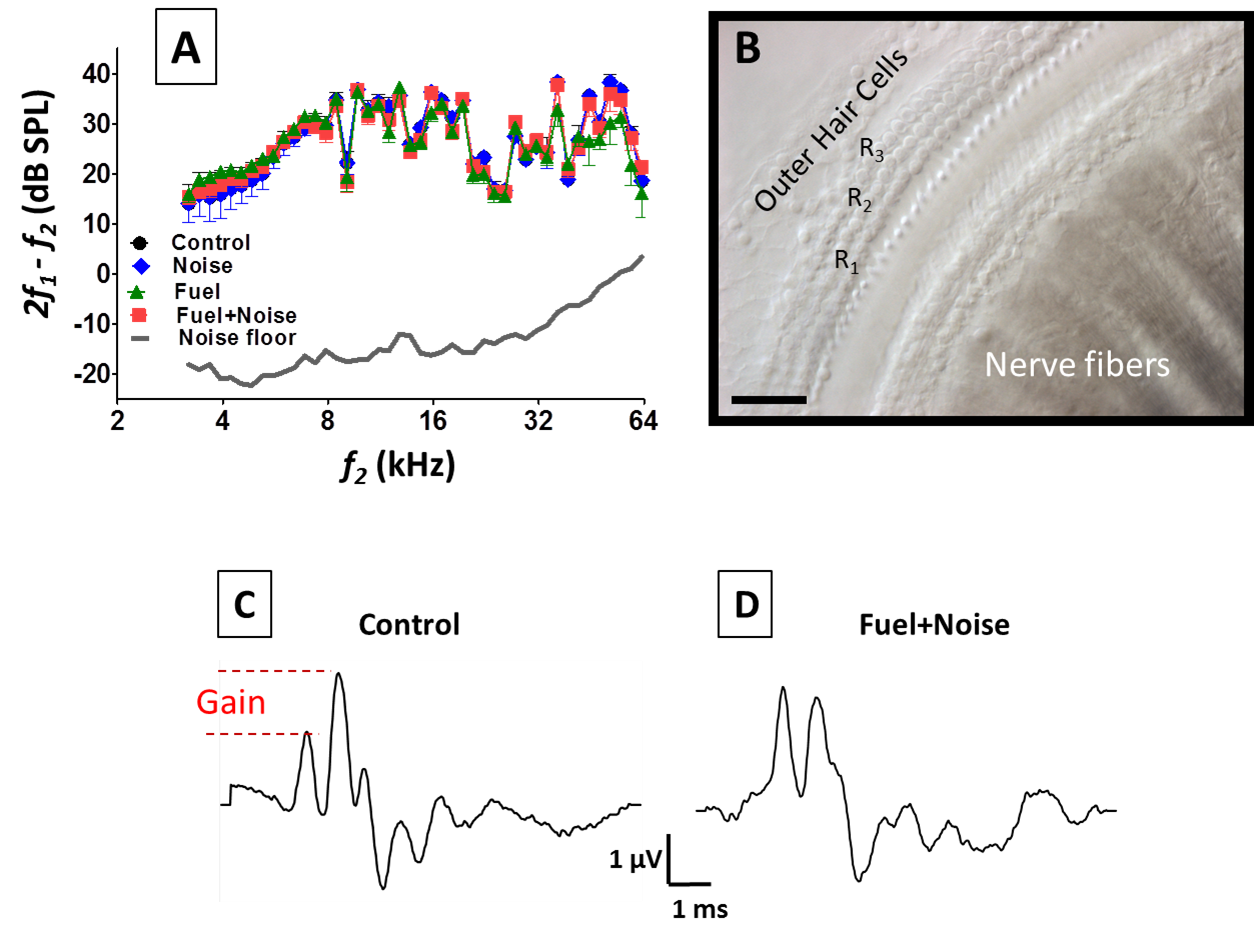Brain injury program
This research is a collaboration with the Wright-Patterson Air Force Base in Ohio.
Epidemiologic evidence suggest an increased risk of auditory impairments among Air Force personnel exposed to Jet fuel. Therefore, the current work aims to determine whether jet fuel exposure affects the peripheral and/or central auditory nervous system as a necessary prerequisite to the development of novel biomedical therapies. The research has already led to several important results. First, we discovered that low level jet fuel exposure induced a central auditory dysfunction that manifested as impaired brainstem encoding of stimulus intensity. Second, this central auditory dysfunction was exacerbated by background noise exposure. Third, the brainstem impairment was dominant among neurons that are responsive to high levels of acoustic stimulation. These findings could represent important and major shifts in the theoretical framework that governs current understanding of jet fuel and/or noise induced ototoxicity. From a clinical perspective the results indicate that jet fuel+noise exposure have consequences to brainstem function that may be more wide-spread and insidious than what was previously known. Therefore, it is possible that a large population of military personnel who are suffering with the effects of jet fuel or jet fuel+noise exposure may be misidentified because they would exhibit normal auditory sensitivity (normal hearing thresholds) but harbor a “hidden” brainstem dysfunction. Such brainstem dysfunctions may be associated with a large variety of clinical conditions such as depression, anxiety, sleep disorders, post-traumatic stress, tinnitus (ringing in the ear), hyperacusis (hypersensitivity to sounds), diplacusis (miss perception of pitch) and impaired speech perception (in ability to understand speech sounds).

Panel A shows the pre-synaptic sensory function of a group of animals exposed to jet fuel+noise. In addition to this group (Fuel+Noise), there are groups that were exposed to only noise and only jet fuel. There is also a control group which was unexposed. Note that the pre-synaptic function between the groups are similar. Panel B is a representative photomicrograph which reveals that the pre-synaptic sensory cells and post-synaptic peripheral nerve fibers were undamaged by the exposures. Panels C & D, are brainstem recordings that illustrate that the jet fuel+noise exposures altered brain activity (p < 0.05). Taken together, the data suggest that exposure to jet fuel combined with background noise may preserve hearing sensitivity but impairs brain functions. All panels were taken from Guthrie et al., 2014, J Toxicol Environ Health A.,77,261-280.